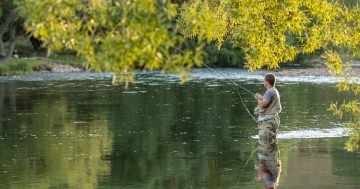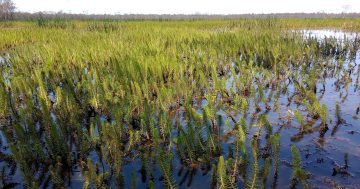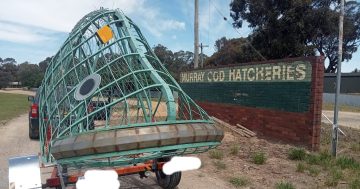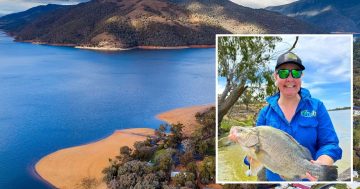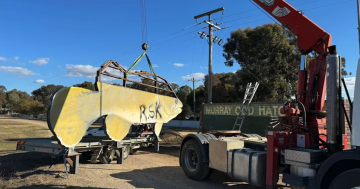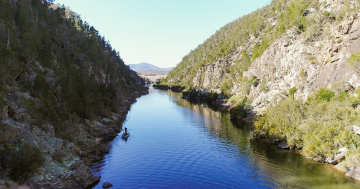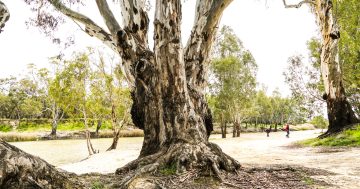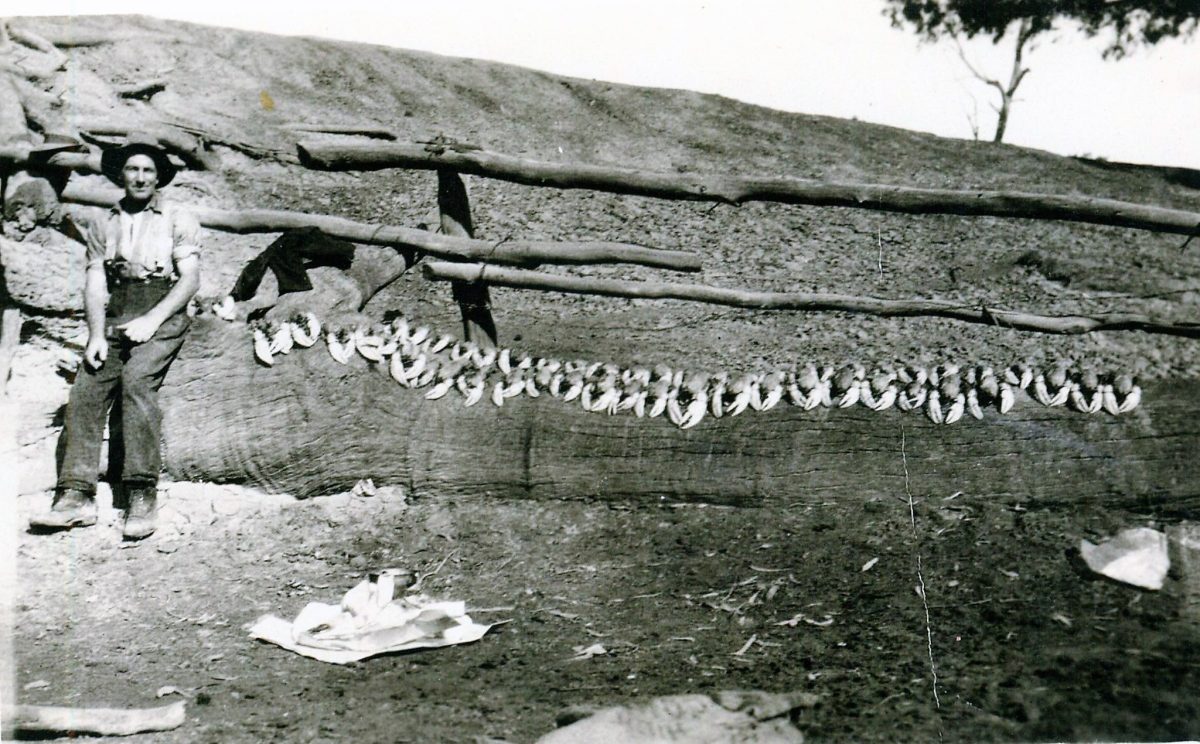
Tim Strusz with a haul of Murray crayfish, c. 1917. Photo: Courtesy of the Hull family.
Fishing has always been a popular pastime in Wagga, perhaps unsurprisingly, given the bounty of aquatic creatures that used to inhabit the Murrumbidgee River.
This week, the Museum of the Riverina steps back in time 100 years, where we join young Edward Henry ‘Tim’ Strusz, who is having his photo taken for posterity next to a truly remarkable haul of Murray crayfish (Euastacus armatus).
Also called freshwater lobster, Murray crayfish are known to have been part of the Wiradjuri diet for thousands of years. Following European settlement, they also became a favourite of Wagga’s new inhabitants and were an eagerly sought-after catch on recreational fishing trips.
In the first half of the 20th century, they became a popular dish served up at a number of Wagga’s cafes, including P. Comino’s ‘Original Oyster Shop’ (established in about 1899) and the Psaltis’s Popular Cafe, where they were an option alongside Murray cod, perch, freshwater bream, oysters and saltwater lobsters.
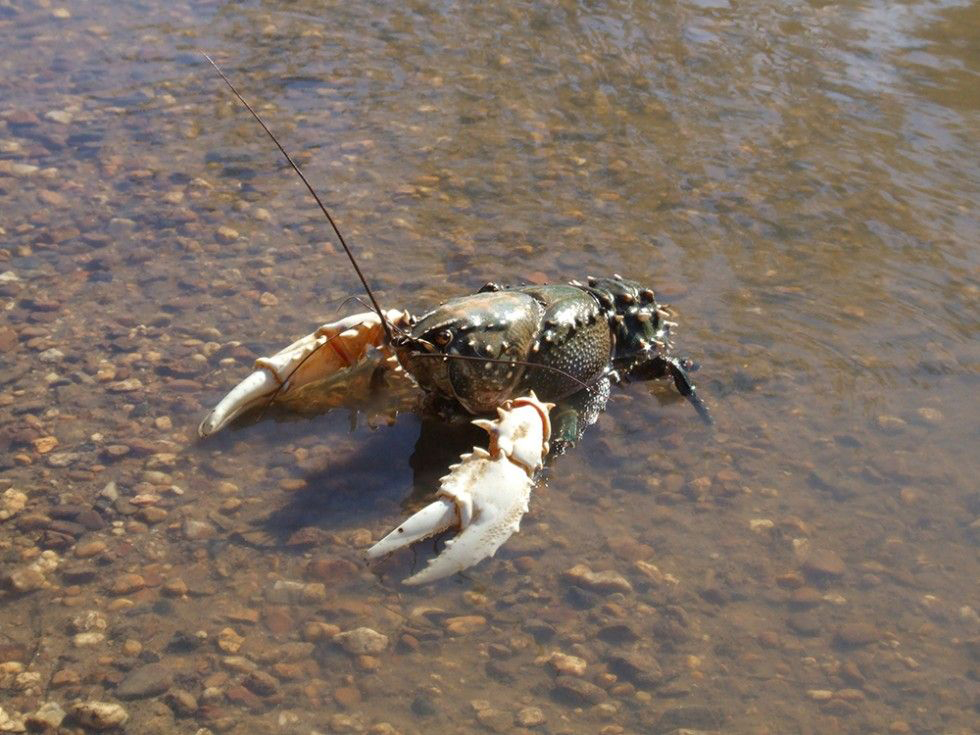
Murray crayfish have been on the menu in the Murrumbidgee for millennia. Photo: NSW DPI.
Murray crayfish are slow-growing animals that can take up to nine years to reach a length of 10 cm. They have been reported to grow to 3 kg and are the second largest freshwater crayfish in the world behind the Tasmanian freshwater crayfish.
The only species in the Euastacus genus that lives in both cold and warm water habitats, they are a long-lived species with a lifespan of anywhere between 30 and 50 years. The crayfish caught by Tim and his friends are large specimens, so are likely a good age.
Interestingly, in the interwar period (between c. 1918 and 1939), Murray crayfish populations flourished in some parts of the river system. This may have been connected to the systematic extermination of waterbirds including cormorants and shags, which took place on the Wollundry Lagoon (1918) and on parts of the Murray (1937). One of the main foods eaten by these birds were Murray crayfish, eels, yabbies, shrimp and small turtles.
All of these animals preyed upon the eggs of fish, including the Murray cod. With the removal of their main predator, the Murray crayfish were left unmolested, and this led to a decline in the Murray cod population.
However, overfishing is one of the most direct threats to the Murray crayfish. Historic commercial fishing in the lower Murrumbidgee and Murray systems from the 1920s to the 1970s saw significant declines in Murray crayfish populations, even leading to their extinction in the lower Murray River.
Today, Murray crayfish are listed as a vulnerable species in NSW.
Do you have any tales of catches you’ve made on the Murrumbidgee River? Or any memories of eating fresh Murray crayfish perhaps?







